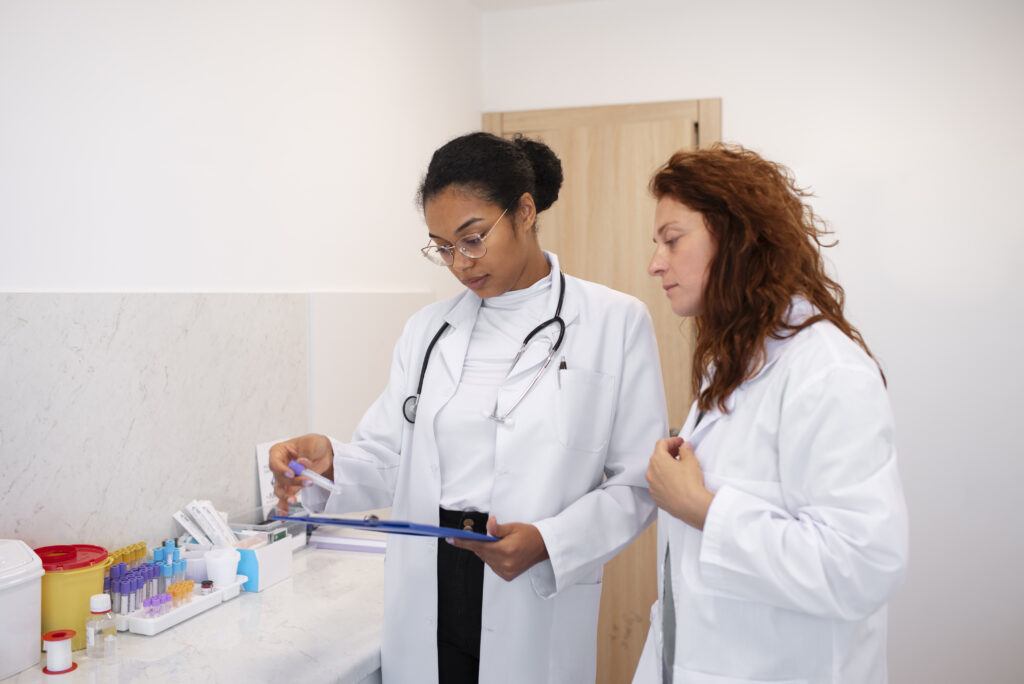Clinical trials and the various phases of clinical trials are of vital importance to clinical research. When any pharma, medical device company, or a biotech company wants to develop a new device, treatment, or drug, they need to research and conduct trials to understand its safety and efficacy on general public before going to the market.
Once the sponsors receive green signal from the concerned authorities, they can organize clinical trials on human subjects. But trials on human volunteers must go through multiple phases before the new treatment or drug is approved by regulatory authorities for public use.
Clinical trials generally go through four phases. Now let us understand the various phases of clinical trials and their significance in the life sciences industry.

Phase 1 of Clinical Trials:
Why:
The main objective of the first phase of a new drug is to determine whether the treatment is safe or not as the side effects on people cannot be known even though the new drug has been tested in lab and on lab animals. Usually, Phase I in clinical trials involve a few dozen human subjects, and the researchers aim to discover the highest dosage that can be administered safely without side effects along with finding out the best way to give the treatment in this phase.
How:
The participants of the trial are given a small dose and are observed for any side effects. In case of minor side effects, the medical personnel give the next few study participants a slightly higher dose. This repeats until the Principal Investigator discovers a dosage that’s most probable to work with negligible side effects. As safety is the primary concern, the researchers pay close attention to the effects of the drug on the body and how the body reacts to the drug.
Phase 2 of Clinical Trials:
Why:
Building on the results of the Phase 1, the Phase 2 is focused on testing if the treatment works or not in specific types of the disease. As per the FDA, around 70% of drugs successfully enter Phase 2. Aimed to measure both the effectiveness and safety of the treatment, this phase usually involves several hundred participants and might go on for months. It might also result in less common side effects because of the larger number of participant size.
How:
The participants are given the same dosage of the new drug that is found to be the best in Phase 1. While most of the volunteers are administered the same dose, some might get different treatment and different dosage. This helps the investigators strike the right balance of safety and response of the drug. The study proceeds to the next phase only if a sufficient number of participants respond positively to the drug without any major side effects.
Phase 3 of Clinical Trials:
Why:
The Phase 3 clinical trials are conducted to ascertain if the new drug is more effective than the existing ones. This phase involves the largest number of volunteers (usually in thousands) and can last for years. With only 33% of the clinical trials proceeding to Phase 3 according to the FDA estimations, it is important for the new drug treatment to succeed in this phase before being approved by the FDA for general usage.
How:
For the study to move forward to the next phase, investigators must prove that their medication is safe and effective than or at least as the existing ones. The researchers utilize a process known as randomization in order to achieve this. Basically, a few of the study participants are selected randomly to receive the new drug and the rest are administered the existing drug.
This phase will be usually double-blinded meaning that both the investigators and participants will be unaware of the drug (old or new) being administered. This will ensure that there is no bias while interpreting the results. Lasting longer than Phases 1 & 2, Phase 3 studies are carried out across multiple locations simultaneously with the subjects under a strict watch for side effects.
New Drug Application (NDA) Submission for FDA Approval
Whenever a new drug passes Phase 3 in the US, the sponsors of the study are required to submit a new drug application (NDA) to the Food and Drug Administration (FDA) for approval. The FDA authorities will then proceed to review the data gathered by the researchers at every stage of the trial and will take a call on whether to approve the drug or not. In some cases, the authorities might ask to conduct more studies as they might need extra evidence to decide if the new treatment is safe and effective.
Phase 4 of Clinical Trials:
Why:
Only 25% to 30% of trials make it to this phase which is also called ‘Post-approval Research and Monitoring.’ Once a new treatment or drug is approved by the FDA, it enters Phase 4 where it is monitored for a long period of time, lasting for years in some cases. This is done to uncover more insights into the safety and efficacy of the drug over extended periods of time as all the side effects of the treatment might not be know in the earlier phases.
How:
The safest of all the phases in a clinical trial, Phase 4 might include thousands of participants to collect information about the adverse effects that arise with the widespread usage of the drug over years. The drugs in the Phase 4 are available for doctors to prescribe them for patients as they have already been approved by the FDA. If any severe or rare adverse events are reported upon the usage of drug, it will be removed from the market and no longer made available for prescribing.
Other Phases of Clinical Trials:
Investigators, sometimes, carry out exploratory studies also known as ‘Phase 0’ trials or ‘Pilot Studies.’ Conducted prior to Phase 1, these aim to explore how the body reacts to an experimental drug. Very small amounts of the new drug are given to a very limited number of patients in this phase.
In studies related to clinical trials of diagnostic tests, it is divided into exploratory phase, challenge phase, and advanced phase. This sheds light on the effectiveness and accuracy of the tests.
Conclusion:
It is a long journey for sponsors and CROs to develop and release a new drug as they must emerge successful in the multiple clinical trial phases. Though time-taking and expensive, all the phases of clinical trials are necessary to ensure the safety and efficacy of a new drug.
Having worked with many life sciences companies and assisting them in their studies, we, at Inductive Quotient Analytics (IQA), clearly understand the many problems associated with clinical trials. This is where we come in. Whether it is Clinical Data Management, Biostatistics, Clinical Programming, Medical Coding or Medical Writing, our experienced team of clinical professionals can accelerate the journey of your novel treatments and help them reach patients faster.
Visit www.inductivequotient.com for more information on how you can empower your clinical trials with us. Also, you can schedule a meeting with our experts by reaching out at hello@inductivequotient.com.
